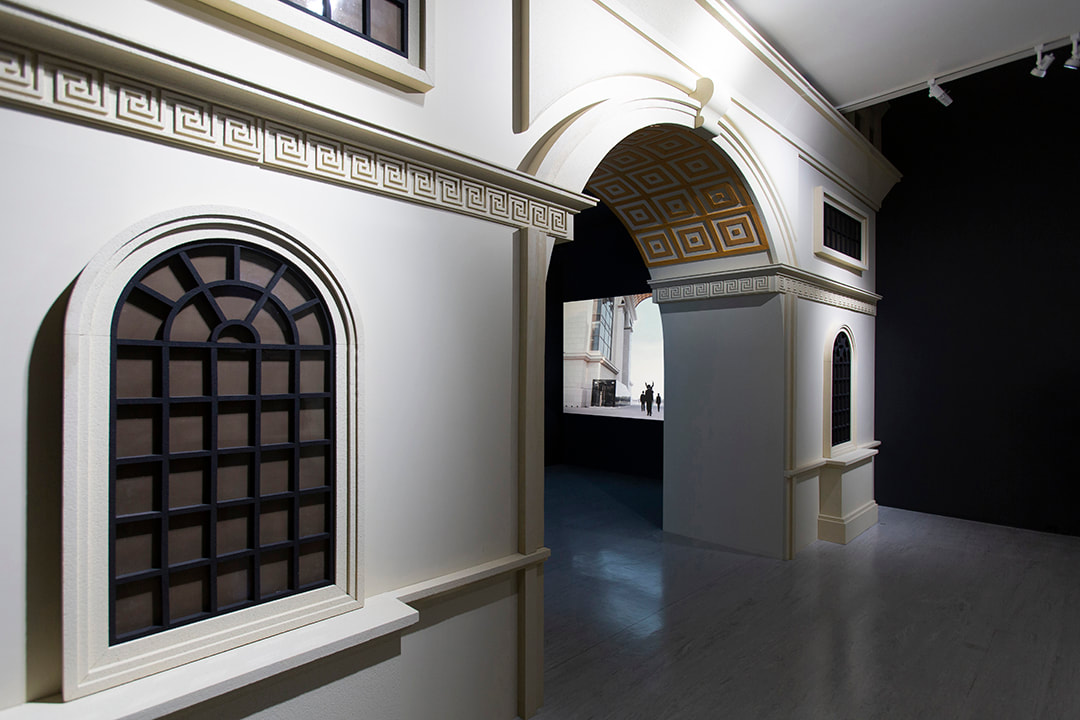Diamond Dream
鑽石夢
2019-Now
Video installation 8’57”
錄像裝置 8分57秒
錄像裝置 8分57秒
Director of Photography攝影指導 | SOK Chanrado
Camera Operator攝影師 | NORM Phanith LEE Sovannarith
Music 音樂製作| WU Yu-Hsien 吳宥賢
Editor 剪輯| Lan Hao-Lun 藍皓倫
Colorist 調色 | Ho Xu 何許
Voice actor 配音 | Darine Abdellaoui 藍玲
3D Animation 3D動畫製作 | Wu Ting-Yi 吳庭毅
Chora group
Choreographer| NGET Rady
Dancer|
CHEK Sangthorn
RITH Daro
SAN Chanveha
SANG Yuri
SUN Sreyleak
YET Raksmey
This work is supported by Department of Cultural Affairs Taipei City Government and Ministry of Culture.
Camera Operator攝影師 | NORM Phanith LEE Sovannarith
Music 音樂製作| WU Yu-Hsien 吳宥賢
Editor 剪輯| Lan Hao-Lun 藍皓倫
Colorist 調色 | Ho Xu 何許
Voice actor 配音 | Darine Abdellaoui 藍玲
3D Animation 3D動畫製作 | Wu Ting-Yi 吳庭毅
Chora group
Choreographer| NGET Rady
Dancer|
CHEK Sangthorn
RITH Daro
SAN Chanveha
SANG Yuri
SUN Sreyleak
YET Raksmey
This work is supported by Department of Cultural Affairs Taipei City Government and Ministry of Culture.
In 1906, the mythological image of Apsara appeared for the first time at the Colonial Exposition of Marseille through the performance of the Royal Ballet of Cambodia. It drew the attention of many artists staying in Paris at the time. Prior to this, the image of Apsara had already undergone transformations and reproductions in South and Southeast Asian mythologies. However, it was until the French colonial period when the Cambodia monarchy utilized the image of Aspara as a symbol of cultural authenticity to fight against the French colonial empire that Aspara officially became the face of traditional Cambodian culture. Nonetheless, after the cultural disruption brought on by the Khmer Rouge, along with the wave of globalization, the image of Aspara has been assimilated into capitalism and commodified as products ubiquitous in the streets.
Koh Pich (Diamon Island), located near Phnom Penh, used to be where leprosy patients were quarantined; hence, its old name, “Island of the Mad.” In recent years, the island has been purchased by oversea Chinese investment companies, and well-known buildings from around the world, such as the Arc de Triomphe, are replicated there to transform the island into an ideal community. Since the launch of the island’s construction, Southeast Asian real estate investors have swiftly jumped on the development wagon, and made the island a hot spot of foreign investments. Nevertheless, the soaring real estate prices due to speculation have gone way beyond what the locals could afford, consequently turning the island into a splendid yet uninhabited ghost town.
After the Royal Ballet of Cambodia’s performance at the Colonial Exposition of Marseille, the ballet company performed again at the Bois de Boulogne in Paris. For this work, the artist collaborates with dancers from the Royal University of Fine Arts in Cambodia and invites them to recreate the historical performance once performed in real Paris in front of the replicated Arc de Triomphe on Diamond Island.
(This is a rough translation of the original in Chinese)
Koh Pich (Diamon Island), located near Phnom Penh, used to be where leprosy patients were quarantined; hence, its old name, “Island of the Mad.” In recent years, the island has been purchased by oversea Chinese investment companies, and well-known buildings from around the world, such as the Arc de Triomphe, are replicated there to transform the island into an ideal community. Since the launch of the island’s construction, Southeast Asian real estate investors have swiftly jumped on the development wagon, and made the island a hot spot of foreign investments. Nevertheless, the soaring real estate prices due to speculation have gone way beyond what the locals could afford, consequently turning the island into a splendid yet uninhabited ghost town.
After the Royal Ballet of Cambodia’s performance at the Colonial Exposition of Marseille, the ballet company performed again at the Bois de Boulogne in Paris. For this work, the artist collaborates with dancers from the Royal University of Fine Arts in Cambodia and invites them to recreate the historical performance once performed in real Paris in front of the replicated Arc de Triomphe on Diamond Island.
(This is a rough translation of the original in Chinese)
1906年,阿普莎拉(Apsara)神話中的形象首次透過柬埔寨王室舞團的表演,出現在法國馬賽的殖民地博覽會(Colonial Exhibition)上,吸引了當時眾多駐留在法國的藝術家們。在此之前,阿普莎拉在南亞神話中的原始形象,已經透過殖民,在東南亞經歷過了數次的改造。直到法國殖民時期,柬埔寨王室將阿普莎拉的形象作為與殖民政權對抗的文化正統性符號,阿普莎拉才正式成為柬埔寨傳統文化的象徵。但在歷經紅色高棉所帶來的文化斷裂,以及全球化的浪潮下,阿普莎拉的形象轉而被資本主義吸納,成為街頭隨處可見的商品。
「鑽石島」是鄰近金邊的島嶼,因曾經作為痲瘋病患的隔離地,舊稱「瘋人島」。近年該島嶼被華人投資公司買下,大量複製了來自世界各地的知名建築,如:凱旋門,試圖將島嶼打造為適宜人居的理想社區。鑽石島剛開始建設,就快速地加入了東南亞房地產的投資熱潮,成為外國投資客的熱點,由於炒作而高升的房價,遠高於當地人的負擔,使得島嶼成為一座華麗卻無人居住的鬼城。
柬埔寨皇室舞團在馬賽殖民地博覽會的表演結束後,曾在巴黎的布洛涅森林(Bois de Boulogne)再次演出。這件作品與柬埔寨皇家藝術大學的舞者合作,邀請他們在鑽石島上複製的凱旋門之前,重演當年的表演。
「鑽石島」是鄰近金邊的島嶼,因曾經作為痲瘋病患的隔離地,舊稱「瘋人島」。近年該島嶼被華人投資公司買下,大量複製了來自世界各地的知名建築,如:凱旋門,試圖將島嶼打造為適宜人居的理想社區。鑽石島剛開始建設,就快速地加入了東南亞房地產的投資熱潮,成為外國投資客的熱點,由於炒作而高升的房價,遠高於當地人的負擔,使得島嶼成為一座華麗卻無人居住的鬼城。
柬埔寨皇室舞團在馬賽殖民地博覽會的表演結束後,曾在巴黎的布洛涅森林(Bois de Boulogne)再次演出。這件作品與柬埔寨皇家藝術大學的舞者合作,邀請他們在鑽石島上複製的凱旋門之前,重演當年的表演。
Screenshot














